Historic Buildings
|
Due to is past wealth, Norfolk has plenty of fine historic buildings, including the highest concentration of medieval churches in the world. |
|
An Introduction to Historic Buildings in Norfolk
|
During the middle ages, Norfolk became a very wealthy county, mainly due to to its wool industry. This wealth funded the construction of some of the finest buildings in the country - from castles and churches to manor houses and town halls. Many of these structures are still in fine condition and open to the public. Here, we highlight some of the very best historic buildings in Norfolk, but there are many more, some of which are hidden from the public eye in private ownership. |
10 Top Historic Buildings in Norfolk
|
|
The Cathedral dominates the skyline of the city.
The building was started in 1096 and took nearly 200 years to complete, with stone shipped from Caen in Normandy. After the townsfolk set fire to the cathedral in the riots of 1272, the timber roofs were replaced with stone vaulting with carved and painted roof bosses. It is one of the finest Cathedrals in England. |
|
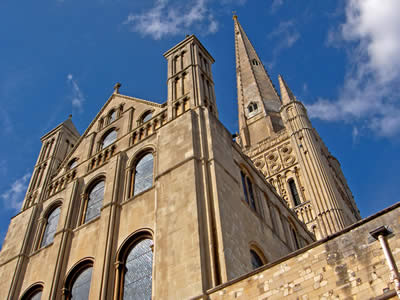
Click to view our Norwich picture tour |
| |
|
|
Norwich Castle was built by the Normans as a Royal Palace 900 years ago. Used as a prison from the 14th century, the Castle became a museum in 1894. One of Norfolk's principal museums, the Castle is packed with treasures including outstanding collections of fine art, archaeology and natural history. |
|
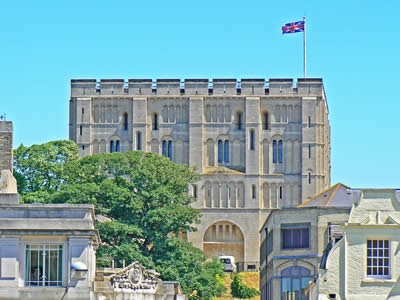
Click to view our Norwich picture tour |
| |
|
|
The magnificent town hall dates back to the 15th century. The building has a distinctive chequered flint front, impressive windows and the arms of both Queen Elizabeth I and King Charles II. The centerpiece of the complex is the Trinity Guildhall, located behind the main window. The town hall was expanded over the years, with the Gaol House added in 1784, which remained in police use until 1955. The gaol house is now a museum where you can hear the stories of local highwaymen, smugglers, robbers and the punishments that were given to them. The museum also contains the Regalia room, containing fine civic treasures such as the King John Cup. |
|
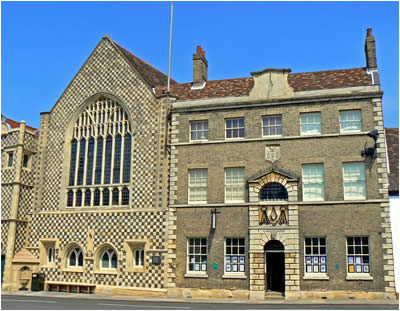
Click to view our King's Lynn picture tour |
| |
|
|
Midway along the main street in Little Walsignham, is the 13th century gateway leading to the remains of a medieval priory. Dominating the site, is the impressive, twin turreted 13th century arch, that would have housed the great east window of the priory church. There is a section of vaulted undercroft to the monks dormitory remaining, as well as the end of the south wall of the dining room.
The priory grounds are beautifully maintained, and in spring the woodland setting is bursting with flowers, including bluebells, daffodils and brilliant white snowdrops. |
|
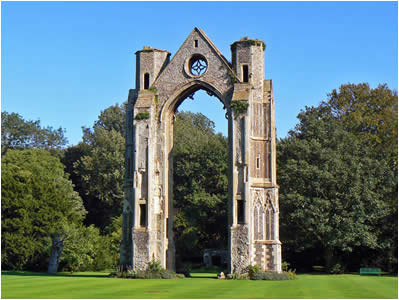
Click to view our Walsingham picture tour |
| |
|
|
Binham's Benadictine monastery was one of the first religious institutions established in Norfolk after the Norman conquest. Much of it's in ruins, with the spectacular exception of the nave. Its beautiful, 13th century west front was repaired, its glass window was safely bricked up, and the whole thing was put into regular use as the local parish church. Inside is a horde of well-kept treasures: carvings, metalwork and a seven-sided font. Outside, grazing cows gather in the surrounding fields, gazing idly at the crumbling cloister walls. |
|
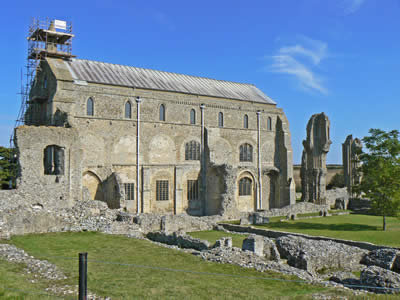
Click to view pictures of Binham Priory |
| |
|
|
Wymondham Abbey was founded in 1107 by William d'Albini and dedicated to the Blessed Virgin Mary and St Alban, this was later changed to St Mary and St Thomas of Canterbury. When built, the church was intended to serve both Benedictine Monks and the parishioners of Wymondham. However, quarrels between the two groups over issues such as bell ringing lead to each faction building their own tower! At the Dissolution in 1538 the Abbey church was granted to the people of Wymondham and a wall was built blocking up the Monks tower! Sir Ninian Cooper designed a great gilded screen, and dedicated it to the young men who had fallen in the First World War. |
|
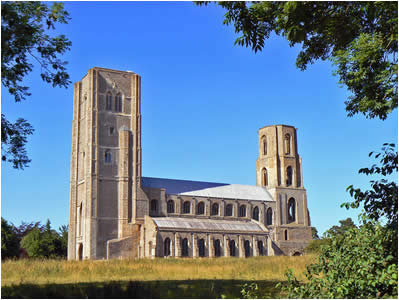
Click to view our Wyndham picture tour |
| |
|
|
Holkham Hall, home of the Coke family and the Earls of Leicester, was built between 1734 and 1764 by Thomas Coke, 1st Earl of Leicester. This Palladian style mansion reflects Thomas Coke's appreciation of classical art developed during his "Grand Tour" of Europe which lasted 6 years and from which he returned in the spring of 1718. The hall is set in large grounds, consisting of a lake, parkland, monument and nature trail. |
|
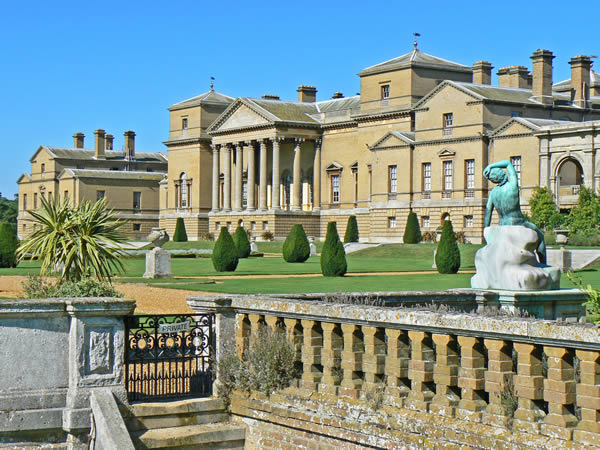
Click to view our Holkham picture tour |
| |
|
|
Over the last 1000 years this lakeside estate has been home to soldiers, scholars and, most famously, Anne Boleyn. The former queen's headless ghost haunts the grounds on each anniversary of her execution. Blickling Hall itself, a lovely red-brick, turreted mansion, is roughly 400 years old. It's filled with a vast collection of treasures, from the portraits in the Great Hall to the extravagant furnishings of the State Bedroom. Outside, waymarked walking and cycling trails snake their way past the flower gardens, around the lake, and through 500 acres of woodland. |
|
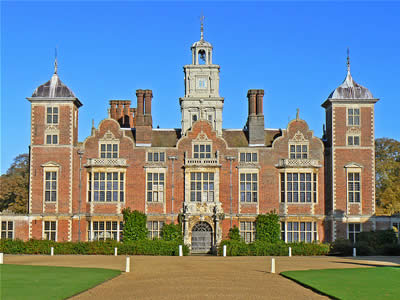
Click to view pictures of the Blickling Estate |
| |
|
|
Felbrigg has stood, unaltered, since the 18th century. At times it's imposing; stern portraits and stained glass windows stare down from the walls. But there's plenty of charm here too. Look out for the miniature fire engine, the collection of globes and the shoe-shaped 1850s bath. The gardens feel similarly lived-in. In fact, you'll have to share them with Felbrigg's population of bees, doves and peacocks. If you venture a little further away from the house, you might stumble across a lake, an ancient wood or a bat-infested icehouse. |
|
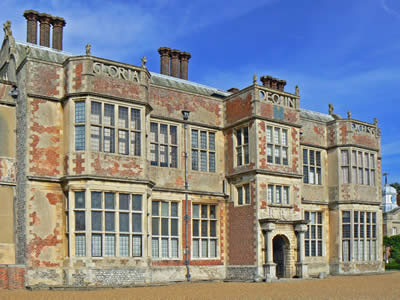
Click to view our Felbrigg Hall picture tour |
| |
|
|
Castle Acre Priory, despite being mainly in ruins, is one of the best preserved monastic sites in England. The priory originates from the 11th century after William de Warenne II and his wife Gundrada visited the great French monastery of Cluny. They were really impressed and decided to build similar ones to introduce the Cluniac order of monks to England. Many of the remains of the building they created at Castle Acre can still be seen today, including the magnificent west-end and prior's lodging. There is also a visitor centre, re-created herb garden and various other displays, all managed by English Heritage. |
|
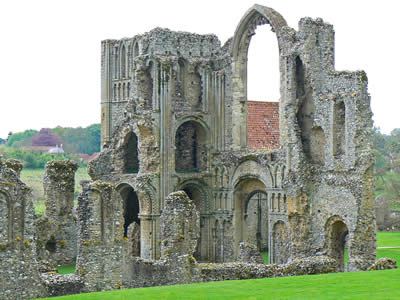
Click to view our Castle Acre picture tour |
|
NORFOLK PICTURE TOURS |
|
|
|
|
|
|
|
MORE OF OUR WEBSITES |
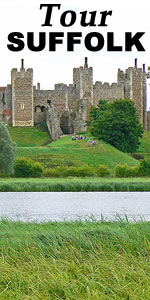 |
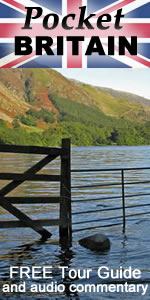 |
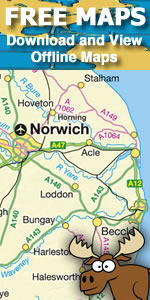 |
| |
|

